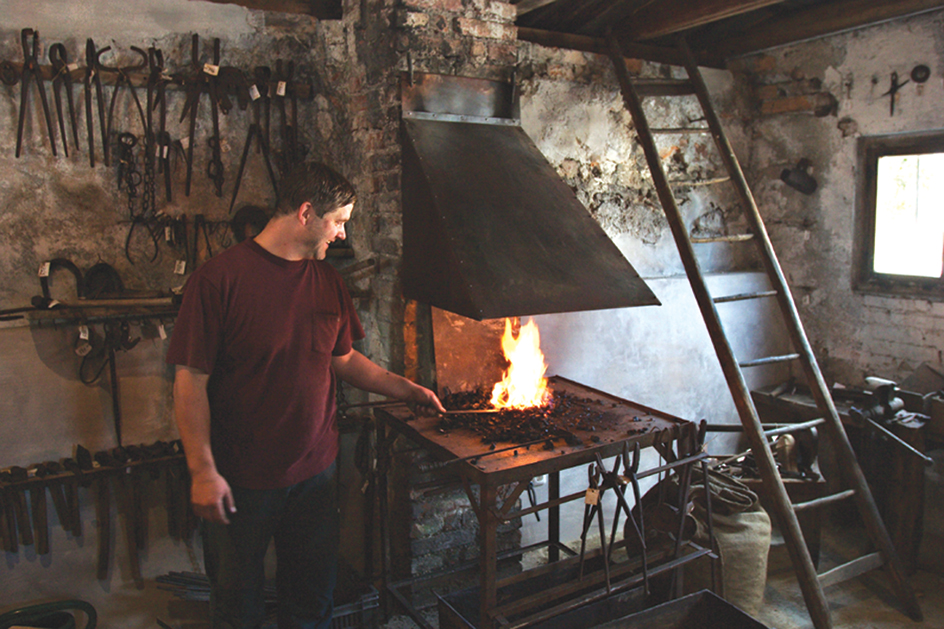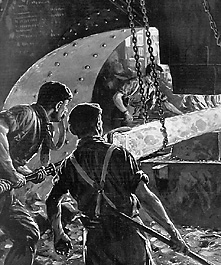Forging is a process in which metal is shaped by being heated and then hammered or pressed. Almost any metal can be forged. The most commonly forged metals include steel and aluminum, and alloys of nickel and titanium. Forgings (objects made by forging) range in size from small hand tools to huge engine shafts weighing hundreds of tons. They include such products as wrenches, crankshafts, axles, and supports for aircraft landing gear.
Metals are composed of crystals. The hammering or pressing of metal bends the crystals and makes their structure less stable. But the heat used in forging enables new crystals to form in place of the deformed ones. In most cases, this process, called recrystallization, toughens the metal. For this reason, manufacturers forge many metal products that must withstand great stress.
Metal can be forged either by hand, using a handheld hammer, or by machine. Hand forging, which is probably the oldest method of shaping metal, has been practiced since prehistoric times. Today, however, nearly all forging is done by machine.
Hand forging
is used primarily for small forgings and in repair work. It is practiced by blacksmiths, who forge horseshoes and other small iron objects. Blacksmiths first heat iron in a forge (open furnace) until it becomes red-hot. Then they remove the iron with tongs and hammer it into shape while holding it against an anvil.

Machine forging
enables forgings to be mass-produced. Forging machines vary greatly in size and can handle objects that are far too heavy to forge by hand. Large cranes must be used to turn some of the heaviest forgings on the anvils.
There are two kinds of forging machines, forging hammers and forging presses. Both use hollow tools called dies to help shape metal. The metal is forced into the die and takes the shape of the die’s cavity.
Forging hammers
shape metal by striking it repeatedly in rapid succession. The power to raise the hammer is provided by steam, hydraulic energy, or electric energy. In some forging hammers, the power also lowers the hammer. In other machines, called drop hammers, the hammer falls of its own weight. Forging hammers are used to shape most small forgings.

Forging presses
squeeze metal into shape. Pressing is a much slower process than hammering, but only a press can provide the force necessary to make the most massive forgings. Pressing also causes less shock to the machine and the building that houses it than hammering does. Most forging presses are powered by hydraulic energy.
Dies
that help shape forgings may be paired or single. Paired dies are used to make tools, engine parts, and other forgings that have complex shapes. The upper die is attached to the hammer or the moving part of the press, and the lower die to the anvil. Items produced by paired dies are called closed die forgings or, if a drop hammer is used, drop forgings.
See also Die and diemaking ; Machine tool ; Steam hammer .
